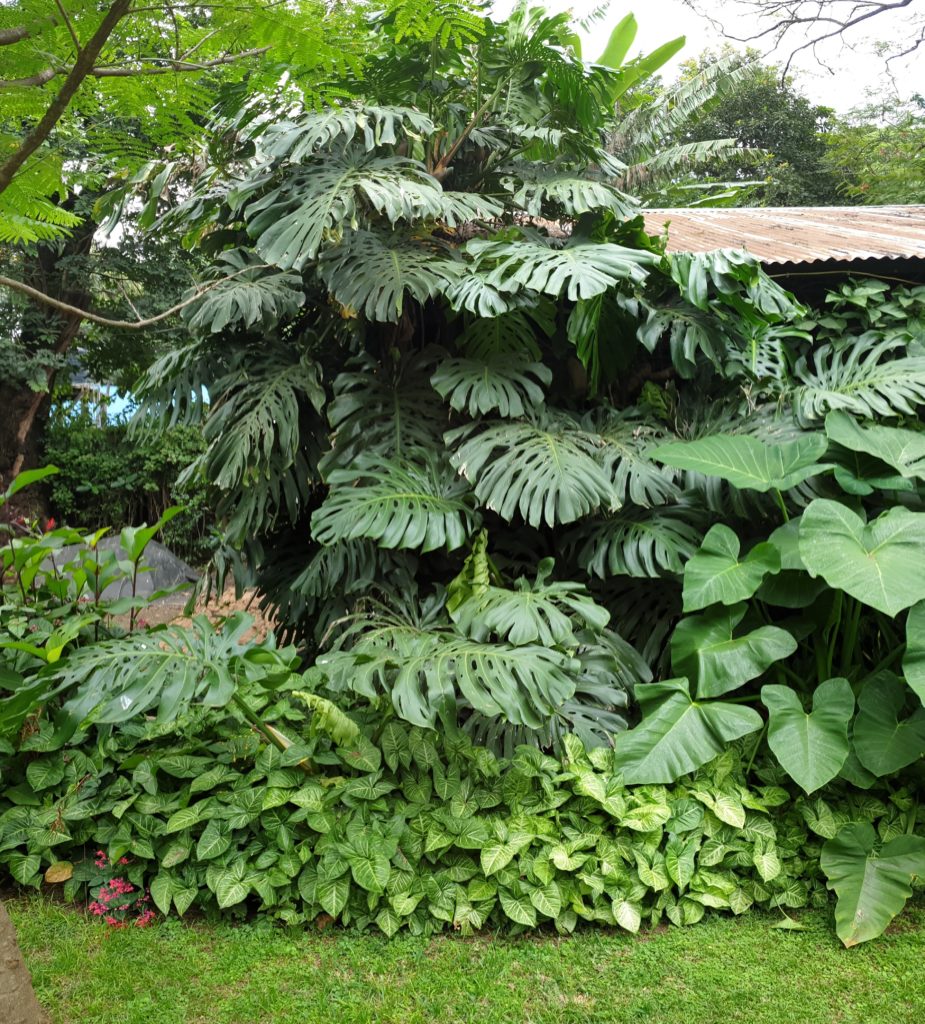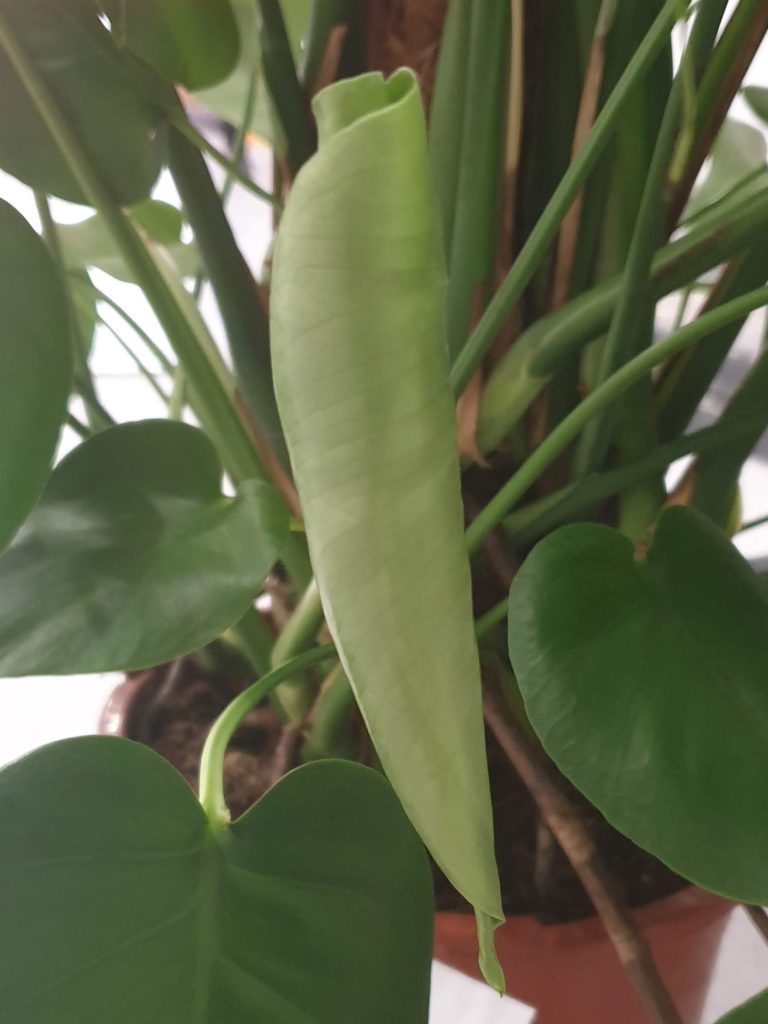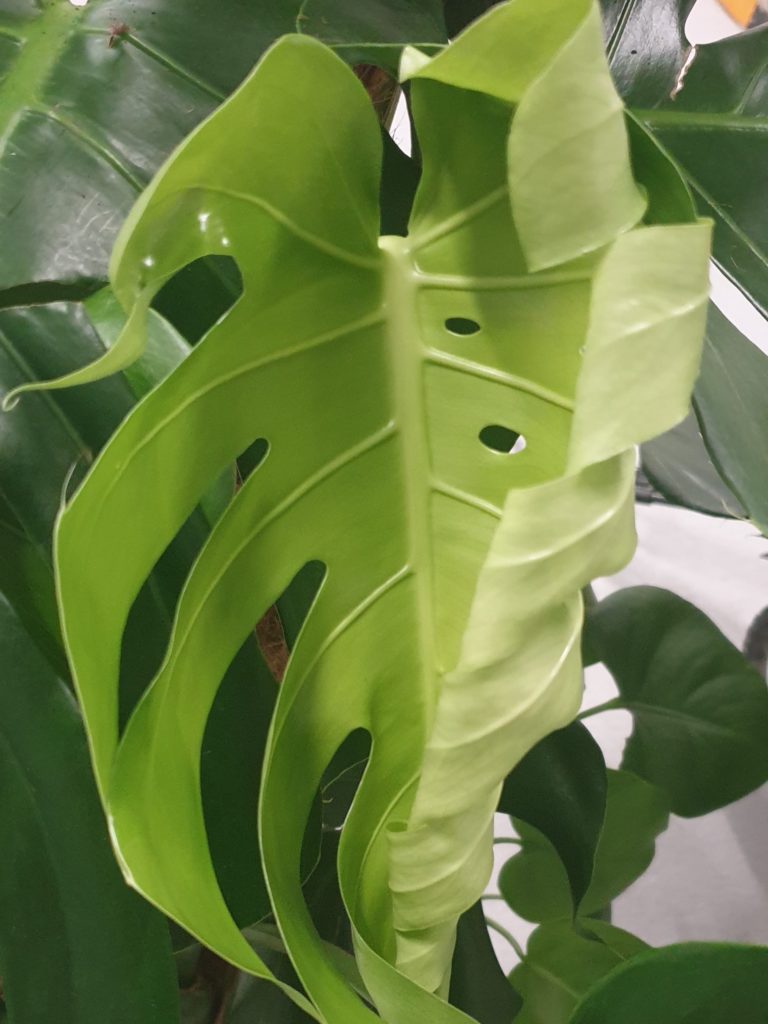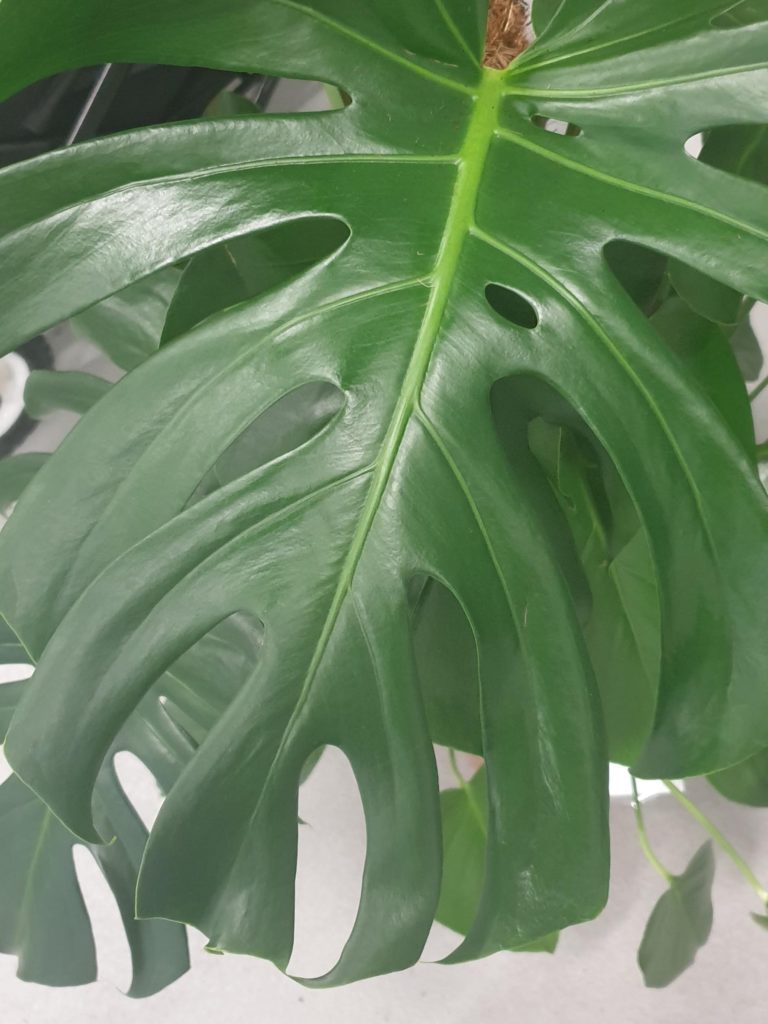Also know as: Philodendron pertusum ,Swiss cheese plant, Ceriman, Calchito 🇲🇽, Hoja picada 🇲🇽, Kletter fensterblatt 🇩🇪, Banana da Macao 🇧🇷, inebe 🇧🇷, false breadfruit.
The monster plant and the delicious fruit.
Some history of the monstera deliciosa.
The monstera plant is native from Mexico, Costa Rica, Panama and Guatemala. Several publications starting from 1940s described this plant as a growing shrub reaching 20m of growth and able to produce a delicious fruit used commonly by natives. It became a popular houseplant during the 70s as it was able to grow relatively well in households. In nature you can observe the monstera deliciosa plants growing attached to trees and rocks.

About the plant.
The swiss cheese plant belongs to the Araceae family and is classified as a climber. The leaves grow up to 20 to 30cm if not larger. The peculiar shape of the leaves show a fenestrated pattern giving the plant the unique look.
The plant grows aerial roots, typical of epiphytic type of plants (literally “plants who doesn’t touch the soil”) Some of it become support for the plant to grow and get attached to surfaces. Aerial roots eventually can reach the soil, contributing to the nutrient absorption.
The fruit is commonly used in South America as delicious treat: The taste has been said is a mixture of pineapple and banana and the texture of the kernels is creamy and soft. Unfortunately the plant will not produce fruit while grown indoors.
The roots are used in Peru and Mexico to make baskets and rope
Why does the monstera deliciosa have holes in the leaves?
There has been some speculation around this fact and several, all valid, theories have been drafted. One of those theories stated that the holes in the large leaves allows the plant to resist strong hurricane winds, allowing the wind to flow through the leaves without damaging the plant. Other observations concluded that the holes in the leaves allow the sunlight to “go trough” the larger leaves (usually in the higher parts of the plant) allowing the light to reach the bottom leaves. This makes sense especially in nature where the monstera deliciosa competes with other plants for amount of received light.

Early stage leaf development 
Fresh unwrapped leaf 
Mature leaf
Older leaves show more elliptical hole patterns whereas the younger leaves usually grow into a heart-shaped form. Botanists and growers recommend sometimes to remove the older smaller leaves growing from the base in order to promote the production of larger and more fenestrated leaves.
Monstera plant care
How to grow monstera in Dubai and in the U.A.E.?
Light requirements
The monsteras love bright indirect (or filtered by curtains) light. We managed to successfully grow this plant also in offices, in complete absence of natural light. In this case, the plant must receive 8 to 10 hours of light per day.
Monstera deliciosa care – Types of soil
The soil composition is critical and the plant will require good drainage as it’s prone to root-rot. Like most of the rainforest and tropical plants the soil should be slightly acidic (ph between 5.5 and 8). Peat moss, cocoa peat are a good base to be mixed with perlite.
We recommend to avoid the typical mixture of potting soil found commonly in U.A.E. nurseries.
All our monstera deliciosa are repotted in a soil mixture of organic potting soil, perlite, peat moss, cocoa peat and a touch of sweet sand. Drainage is key.
Watering
The monstera plant is pretty much forgiving when it’s about watering. Our recommendation for the weather in Dubai and UAE is to add few cups of water when the soil is nearly dry.
Some resources we like
Telegraph article about monstera leaf holes
From our shop
-
 wicker basket large65.00د.إ
wicker basket large65.00د.إ -
 wicker basket XL85.00د.إ
wicker basket XL85.00د.إ

